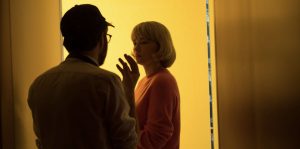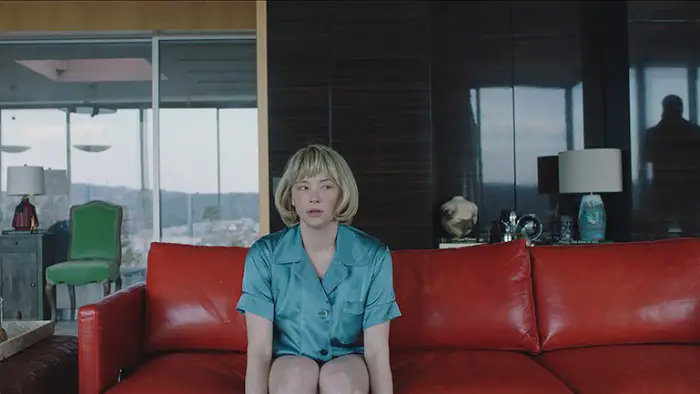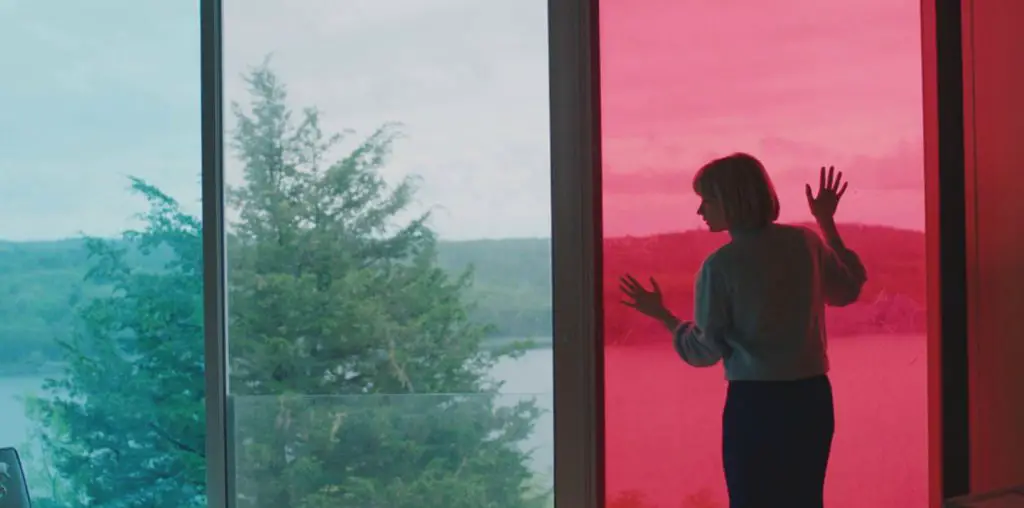
As a man, I felt like you were able to compose a compelling narrative for a female character, and I’m wondering, did you talk to any women about the script as you were writing it or how did you get inside Hunter’s head as a character?
I’m so pleased to hear that. While working on the film, My amazing producers, Mollye Asher and Mynette Louie, and I was very concerned about my male gaze. We wanted to tell a story that was as truthful as possible and instead of ignoring it and just saying, “Oh well! It’ll be fine,” which I think a lot of male directors do to their detriment, we spent a lot of time talking about how to counteract my male gaze. We focused our time on ways to mitigate that. I was very fortunate that so many incredible female artists came on board and decided to make my grandmother’s story their own. Two-thirds of our cast and crew were women, and all of our department heads were women. In collaboration with our amazing lead actor, Haley Bennett helped make the story feel truthful. There’s also another element to it, which is that when I was in my twenties for about four and a half years, I identified as a woman. I wore women’s clothing, I had a different name, and that was a fascinating and wonderful time in my life. I’ve always been kind of—my gender expression has always been a little fluid, so that was a time that was extremely creative and wonderful. It also opened my eyes up a lot to the way that society views and tries to control female-identified people. When you’re raised as a man, you don’t end up seeing how big of a part of society sexism is, and that it’s everpresent every day for women. So, it was a really wonderful time that solidified a lot of my feminist beliefs that made me want to make a film about it.
What kind of advice would you give for putting together a crew to make a film. What kind of advice would you give to someone who wants to make a movie as good as Swallow?
The key to making a good movie is to surround yourself with incredibly talented people who are as passionate about the story you want to tell as you are. I remember in film school, they don’t talk enough about how important the director-producer relationship is. I asked my colleague who were the best producers in the business, and she said Mollye Asher and Mynette Louie, but you’ll never get them. So, I was like, alright, I’m going to take a chance. I reached out to Mollye Asher, who really responded to the script and decided to make the film with me. She brought on Mynette Louie. It was a wonderful bond and collaboration between all three of us. They fought with everything they had to get the movie made. It was a journey a lot of indie production companies were very into this film, but I think they were a little nervous about a first time director with an unusual story. We got a little bit of money from the Sundance Catalyst program, who we’re very grateful to be a part of, but most of our financing came from France with the industrious Charades and Logical, and we’re very lucky they took a chance on us.

“We wanted to tell a story that was as truthful as possible and instead of ignoring it…”
I would say my biggest message for indie directors is to believe in what you’re doing. Make art that you’re extremely passionate about. I think films can increase empathy and fight prejudice. I think they can change the world. If you believe in what you’re doing, then other people are going to want to work with you and get that story made. I was very lucky to work with an incredible team. My cinematographer Katelin Arizmendi is a true visionary. Our production designer, Erin Magill, had incredible aesthetic sensibilities. Our costume designer, Liene Dobraja, really knows how to bring out who somebody is through what they wear. Of course, my editor, Joe Murphy, and my composer Nathan Halpern who made a beautiful and melodious score for the film. I mean, just find great people to work with!
You participated in some of the Sundance Labs for screenwriting and directing, and I wanted to know what the best practices would be for someone wanting to apply themselves?
First of all, it was an absolutely, deeply inspiring, educational experience going to the Sundance labs. It was one of the best times of my whole life, and I learned so much. I’m eternally grateful to them. It’s an amazing experience. I did both the screenwriter’s lab and the director’s lab, and you’re working with amazing professionals who made some of your favorite films. They’re sitting there with you and telling you how to improve your writing or how to choose a better camera angle for your scene. In the director’s labs, you actually shoot a scene from your movie, edit it that day, and watch it that night. It’s an incredibly inspiring experience. I’d say that the best way to go about is to find someone who has previously been in the lab who could maybe recommend you because the Sundance Institute always asks alumni and other filmmakers, so if you have that connection, that’s a good start. Of course, anyone can apply. They really just care about the material. They’re really interested in new voices and bold, daring stories, so I would say go for it and keep applying. It’s a wonderful program that I was very lucky to have been a part of.
